ap bio u2
1/94
Earn XP
Description and Tags
def more info than what's necessary for the ap test
Name | Mastery | Learn | Test | Matching | Spaced |
|---|
No study sessions yet.
95 Terms
cell theory
1. all organisms are made up of cells
2. the cell is the fundamental unit of life
3. cells come from pre-existing cells
what is a cell? (5 requirements)
cell = smallest unit we define as living
=> has cell membrane
=> has cytoplasm
=> store, use, and transmit genetic info
=> ribosomes
=> metabolism
metabolism
set of chemical reactions used to maintain homeostasis by transferring energy -> build/breaks molecules
anabolism
builds up from smaller units -> REQUIRES ATP
catabolism
breaks molecules down -> RELEASE energy in form of ATP/heat
cell membrane
lipid bilayer
encloses the cell and controls the movement of substances in and out (helps maintain homeostasis)
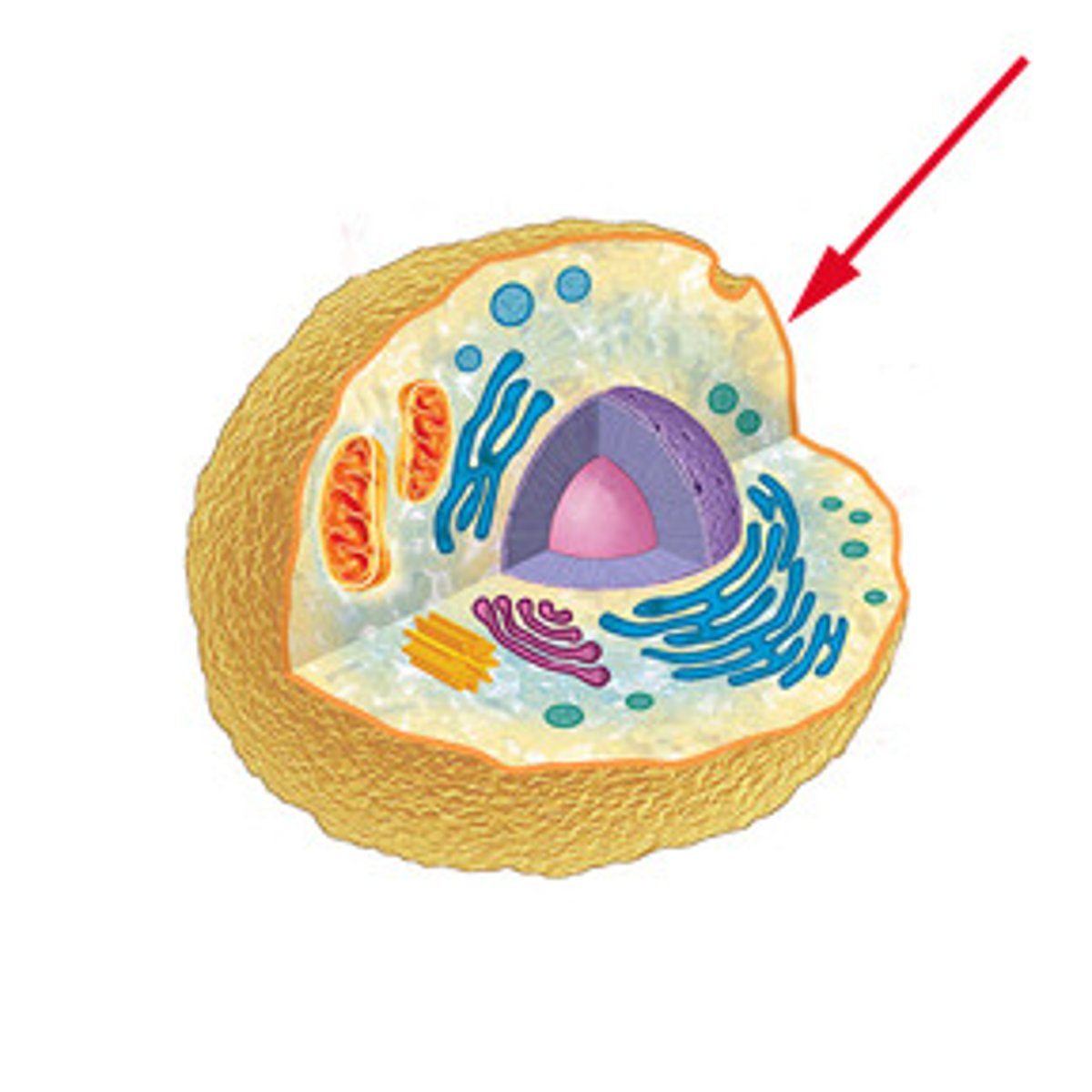
homeostasis
active maintenance of stable internal conditions
(cell requires energy to maintain it)
cytoplasm
jelly-like substance inside the cell
where organelles are suspended and where cellular processes occur
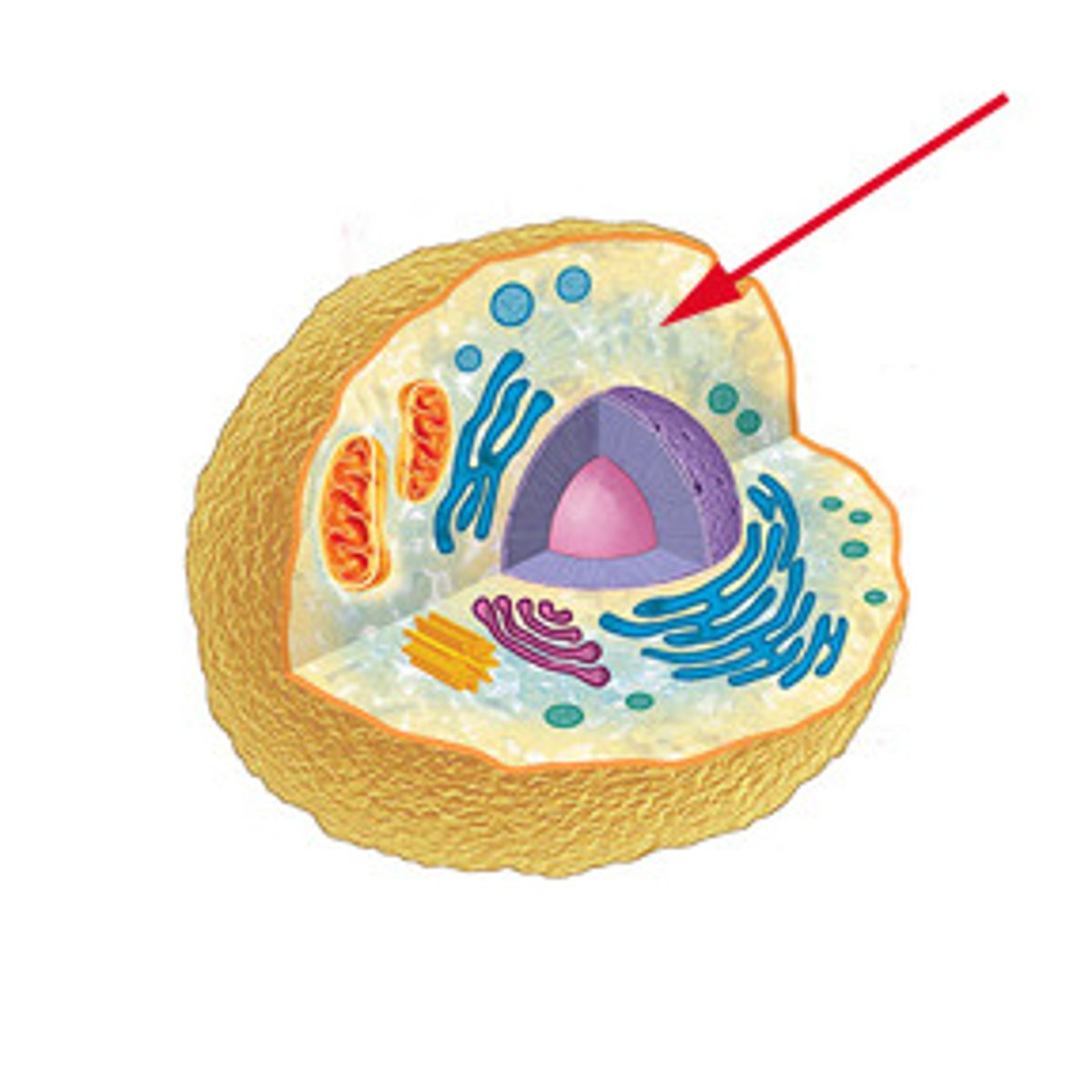
ribosome
site of RNA synthesis (made up of RNA & protein)
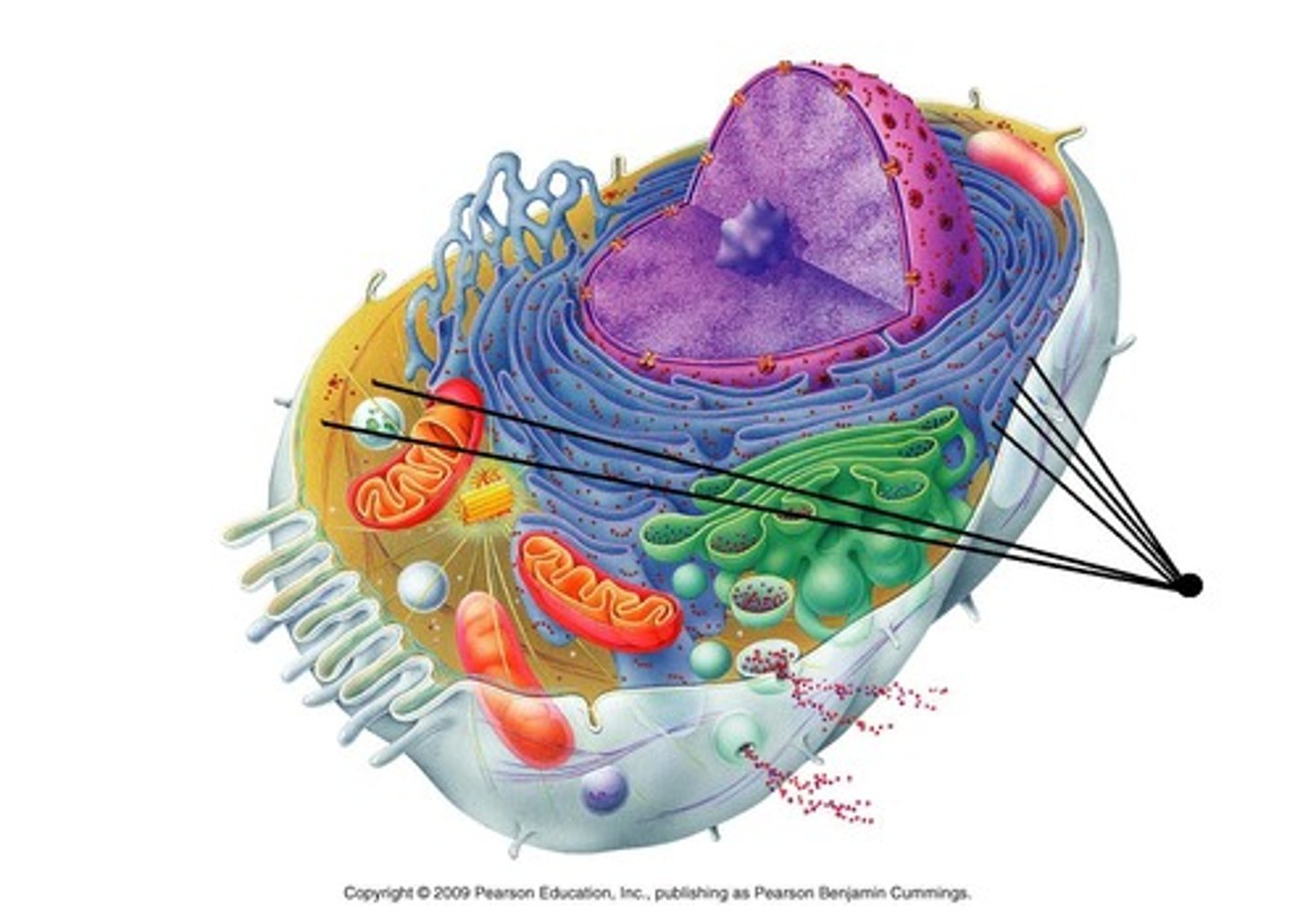
nucleus/nuclear envelope
organelle with a double membrane (nuclear envelope) and nuclear pores
houses DNA, RNA synthesis, ribosome assembly
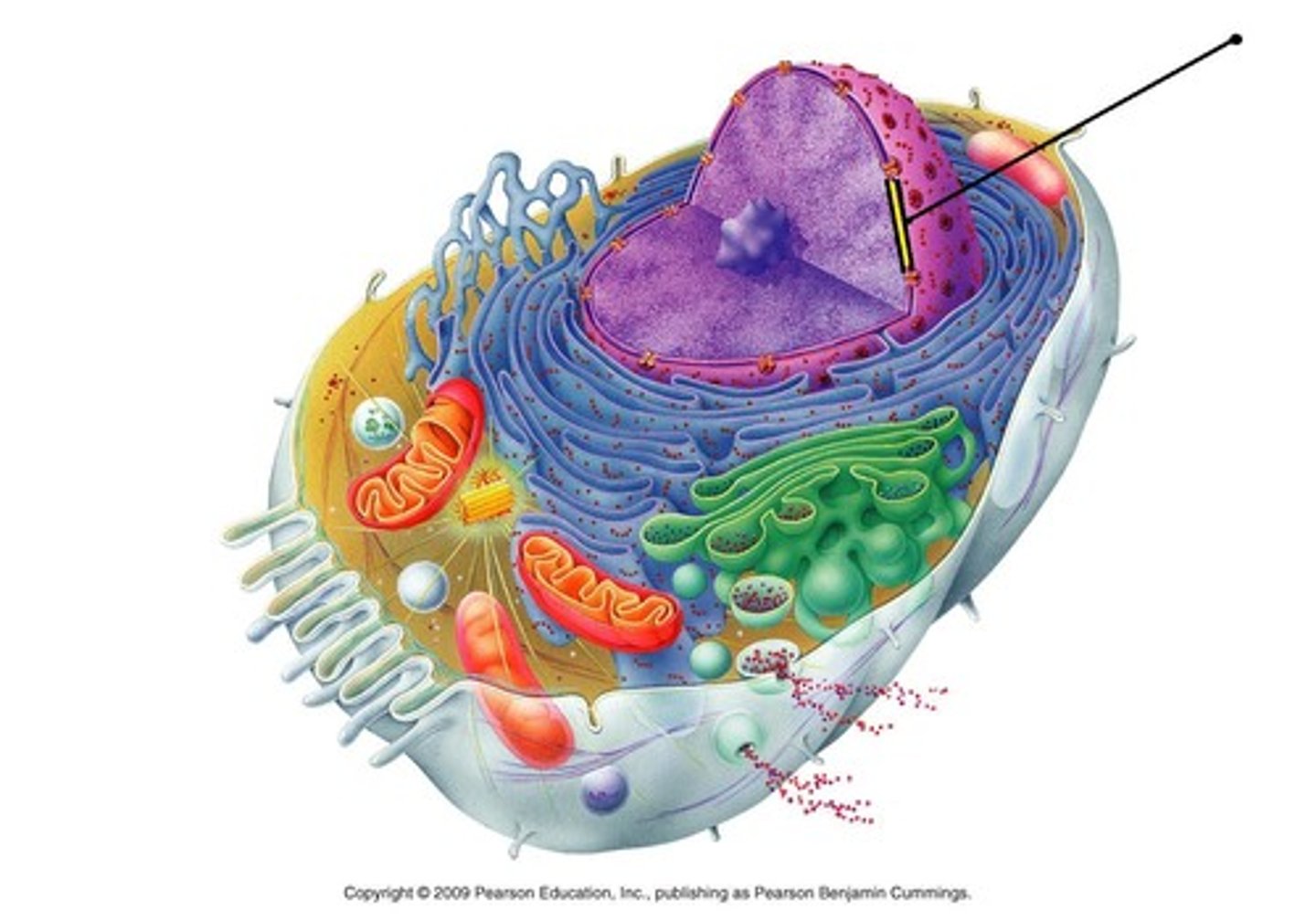
endoplasmic reticulum (ER)
outer membrane of nuclear envelope

rough ER
covered with ribosomes
where proteins for transport are assembled
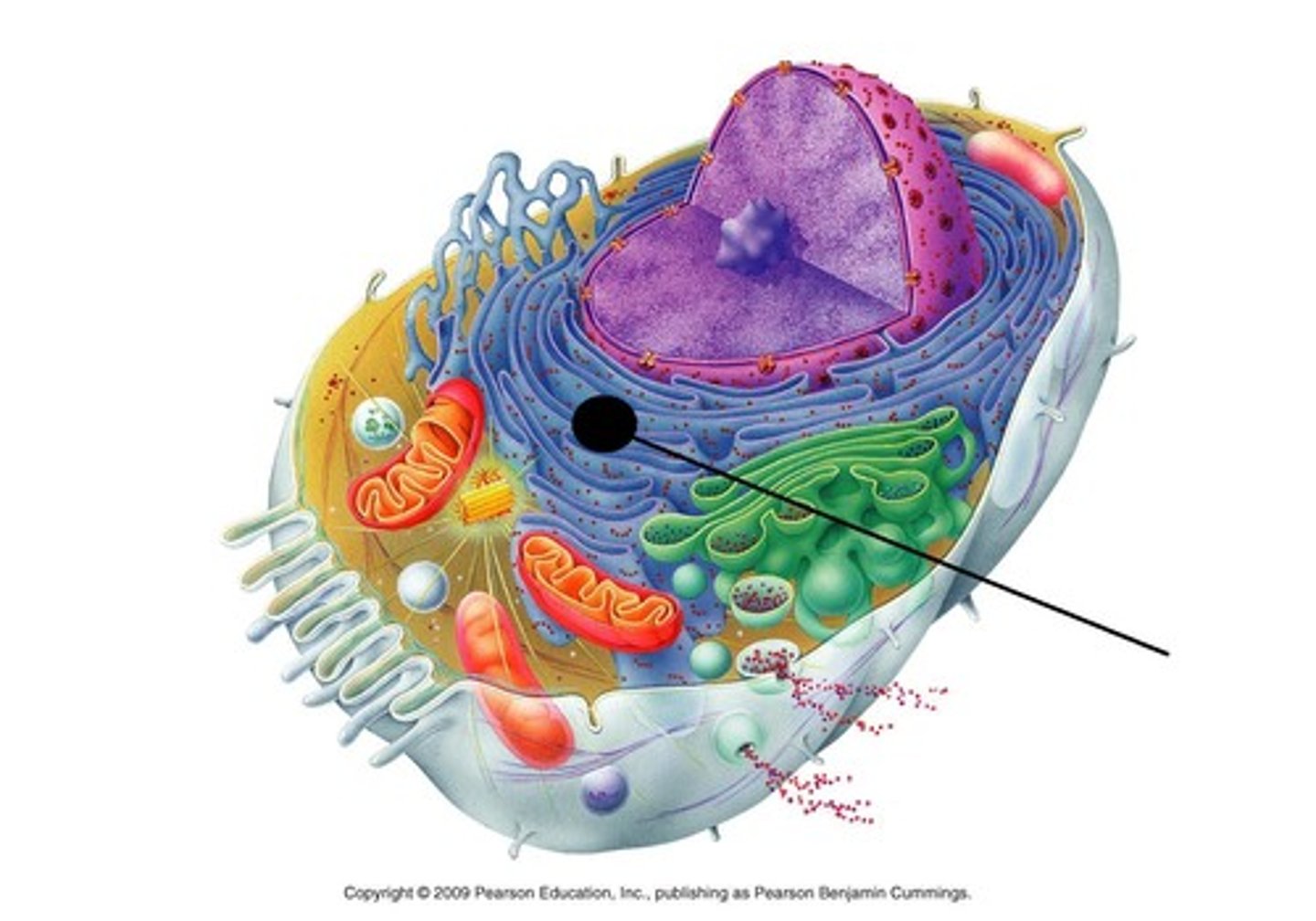
smooth ER
no ribosomes
makes lipids, metabolizing carbs

golgi apparatus
flat disk shaped membranes
modifies, sorts, packages proteins
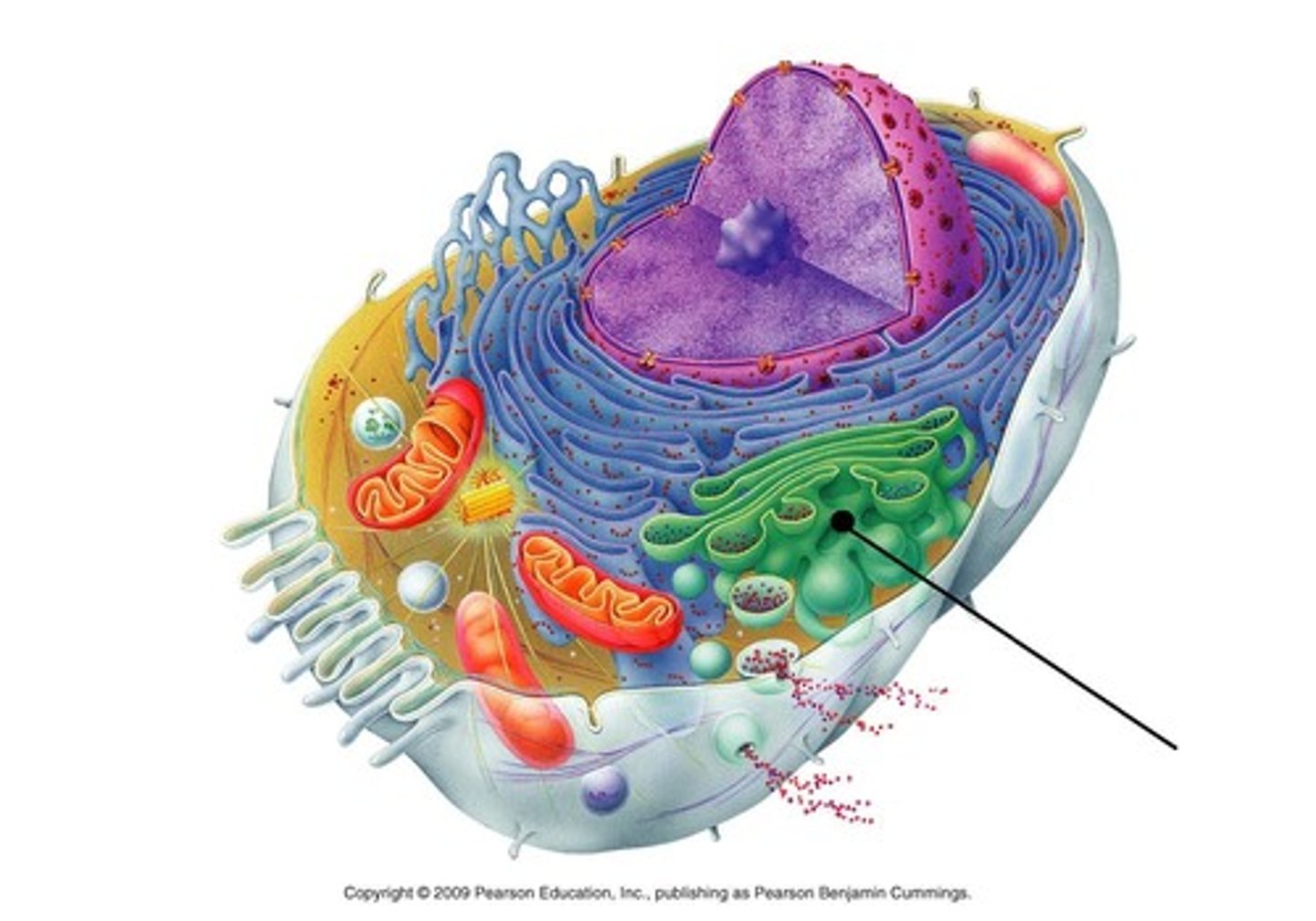
vesicle
a small cavity or sac that contains materials in a eukaryotic cell (absorbs toxic ones and transports others)
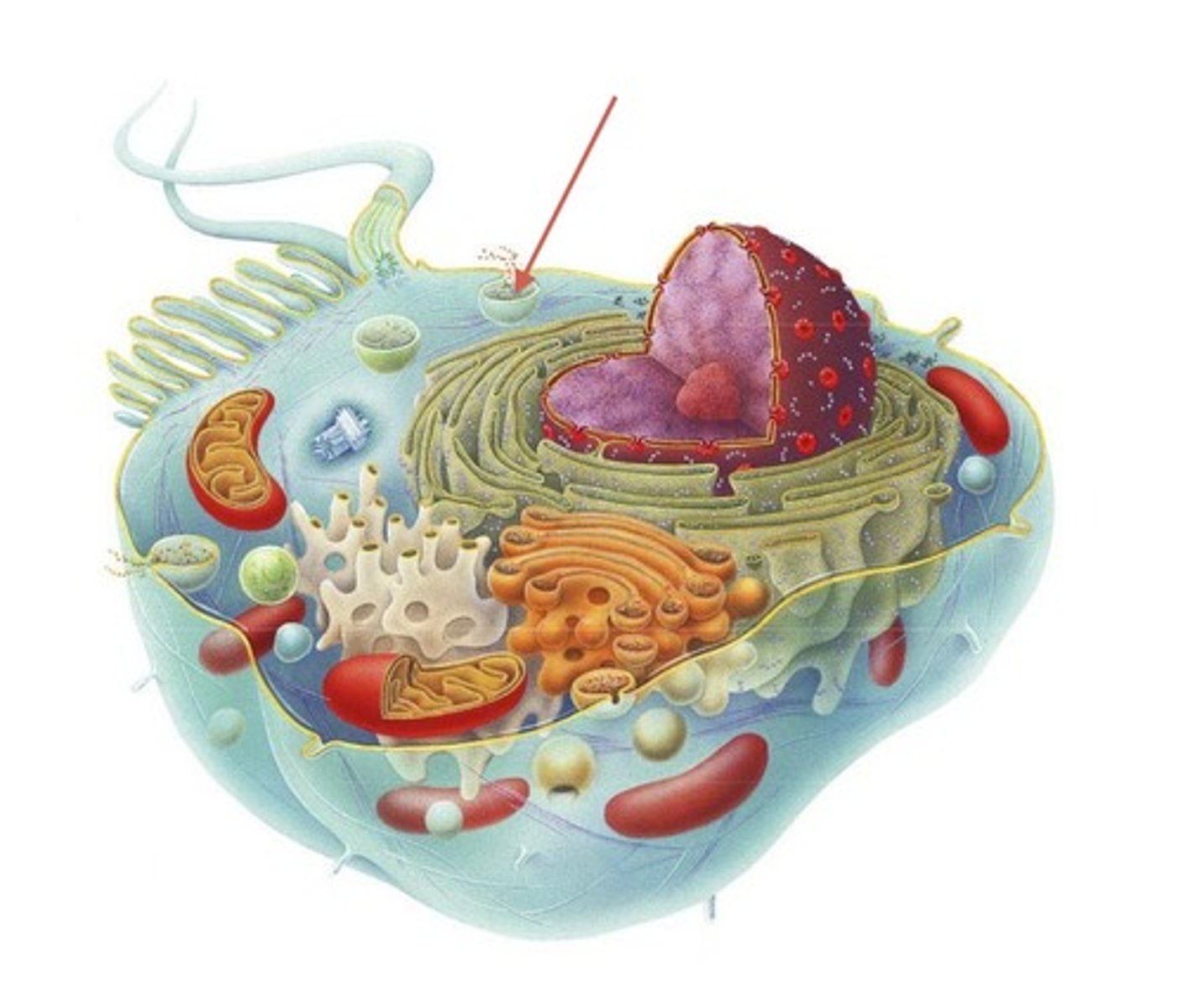
lysosome
vesicle from golgi that contains digestive enzymes
breaks down old macromolecules for reuse in the cell

mitochondria
double membrane
site of cellular respiration; produces ATP (energy)

chloroplast
stacks of thylakoids (contains chlorophyll) connected by membrane bridge
site of photosynthesis

cell wall
rigid outer layer found in plant cells, fungi, and some prokaryotes
maintains cell shape (structural support/protection)
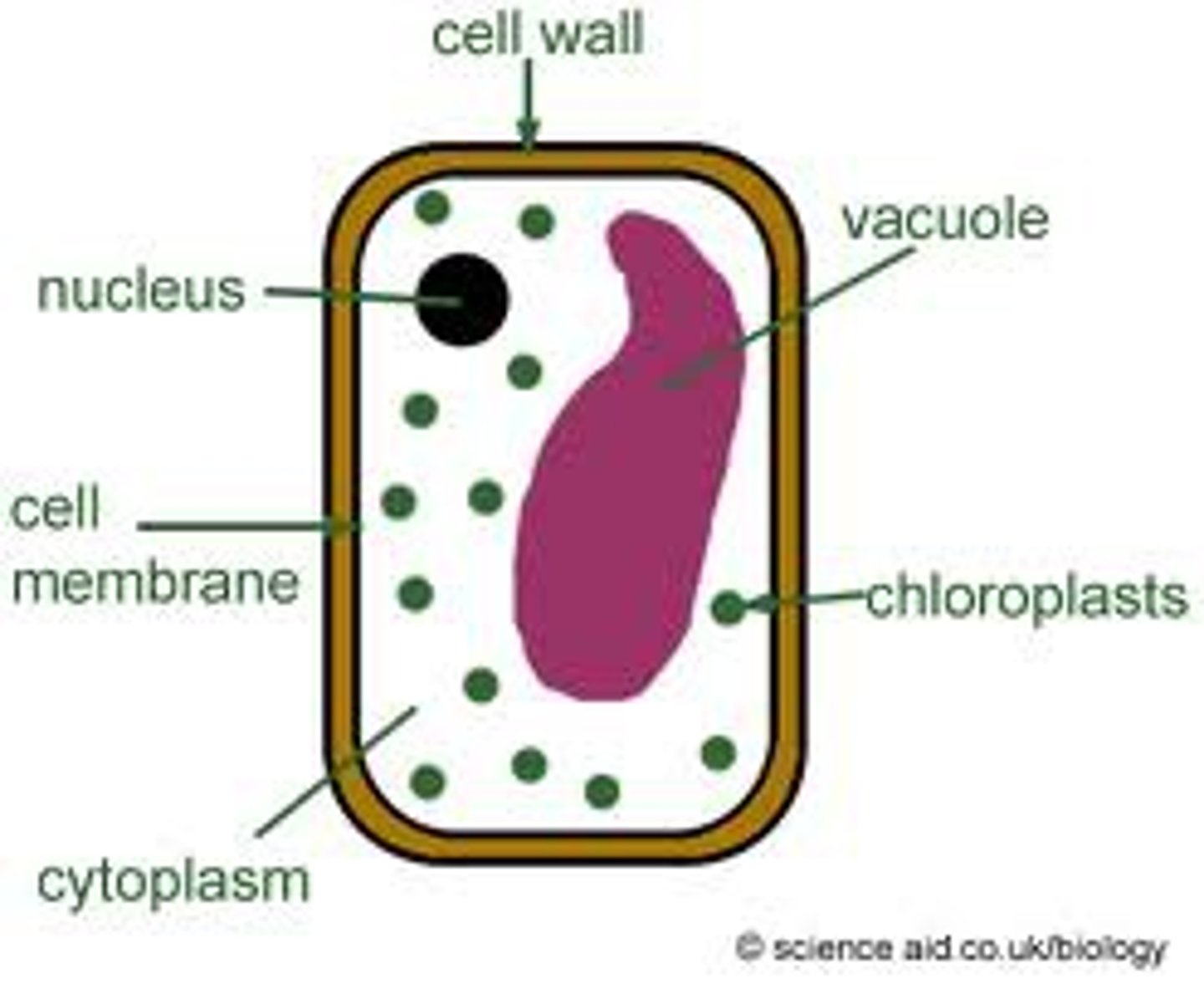
cytoskeleton
network of protein fibers
structural support, facilitates cell movement, and organizes organelles
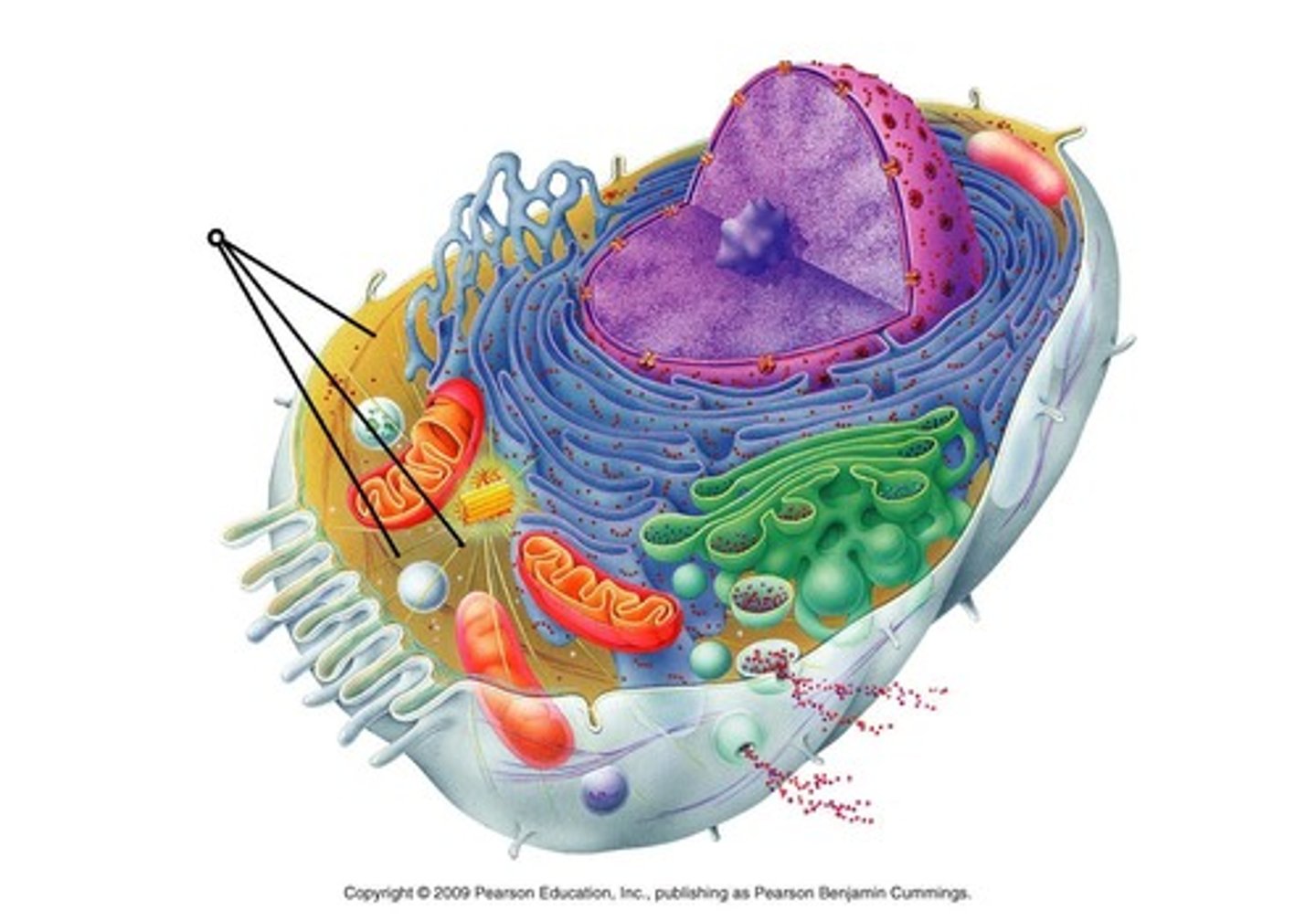
vacuole
membrane-bound sac that DOESN'T fuse with others
stores nutrients & other waste products
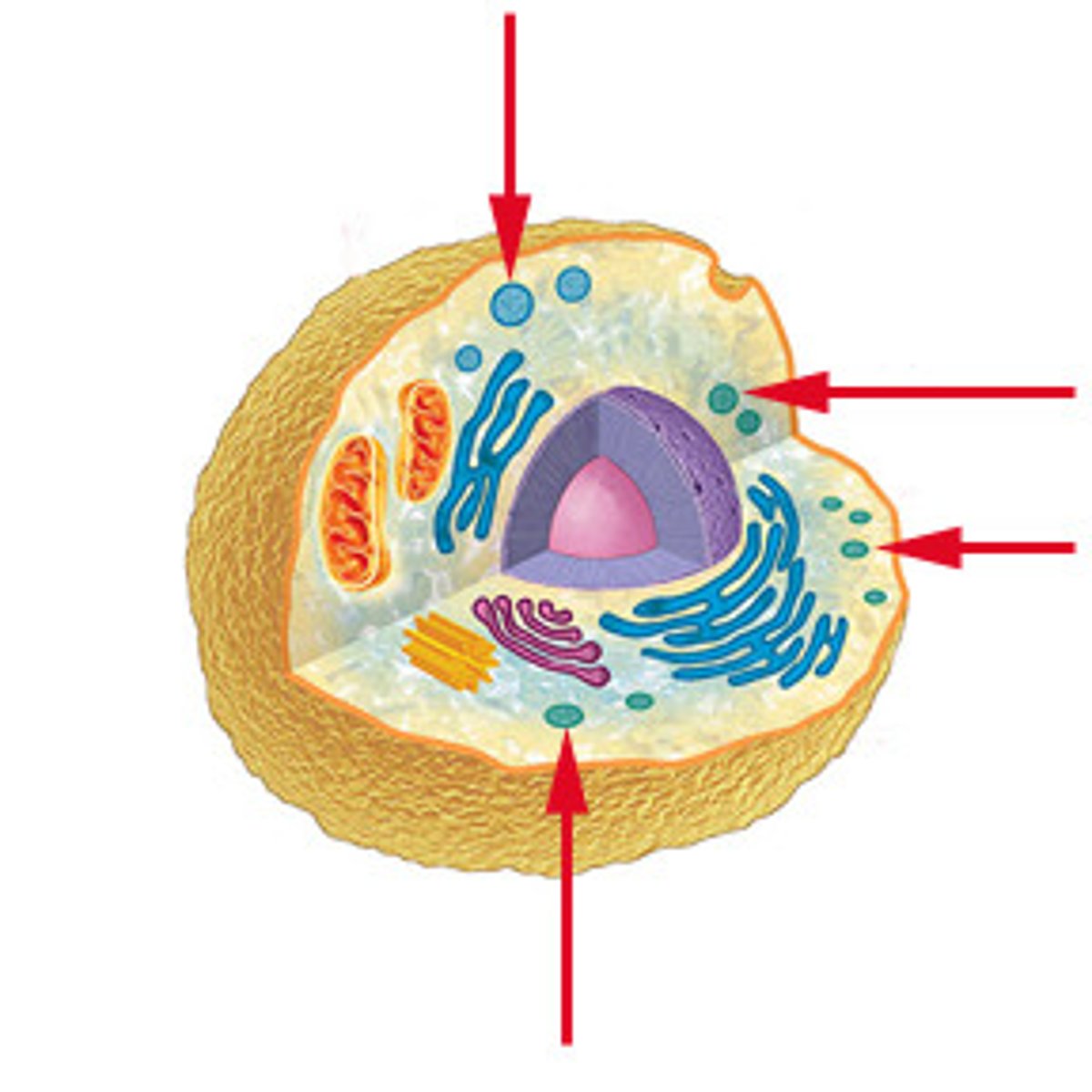
flagella
whiplike tails found in one-celled organisms to aid in movement
cilia
extends from membrane and helps with motion across the membrane surface
central dogma of biology
DNA provides info for RNA -> RNA synthesizes proteins
ATP
nucleotide that provides energy
diffusion
passive movement of molecules from high -> low
driven by the random motion of particles
properties of prokaryotic cells (5)
-small
-no nucleus
-few organelles
-unicellular
-bacteria/archaea
properties of eukaryotic cells (4)
-large/complex
-has nucleus
-uni OR multicellular
-includes plants & animals
properties of BOTH euk and prok
has: DNA, cell membrane, cytoplasm, flagella/cilia, ribosomes
what do eukaryotic cells mainly rely on for organization?!
the cytoskeleton (as opposed to the cell walls, which some don't have)
types of prokaryotic cells
bacteria and archaea cells
archaea
tolerates/requires environmental extremes (heat/acidity)
plasmids
small rings of DNA that can replicate separately
inside bacteria
which increases faster, SA or V
volume
why does diffusion limit prokaryote size? how do they deal?
only works over short distances BUT internal membranes make larger sizes viable (more SA provided)
bulk flow
the movement of a fluid driven by pressure
whys circulatory system important??
provides oxygen w out using diffusion (more efficient way to transport oxygen to cells)
different phospholipid forms
micelle and liposome
micelle
small single-layered amphipathic molecules
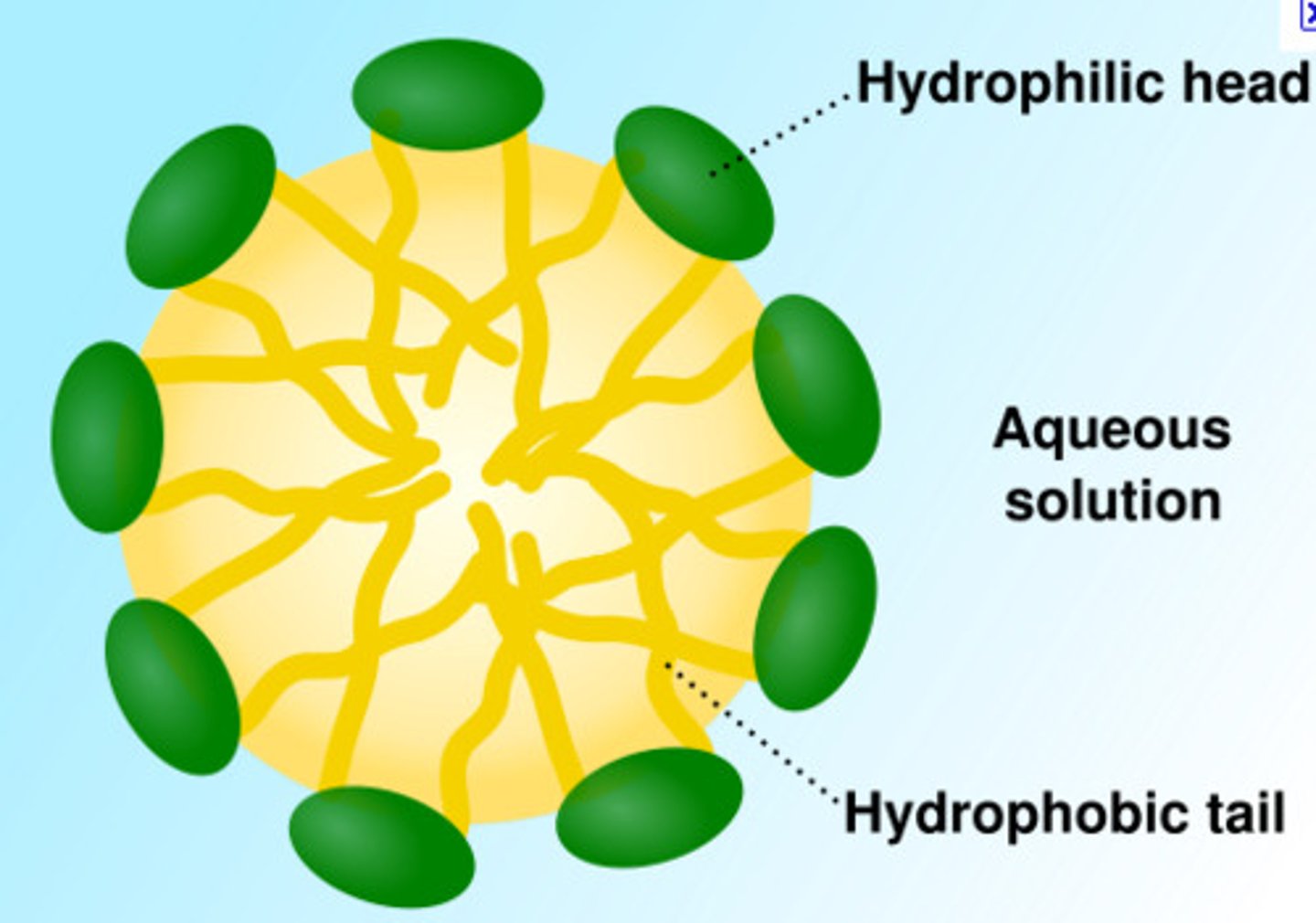
liposome
larger spherical vesicles with a lipid bilayer for delivering substances into cells
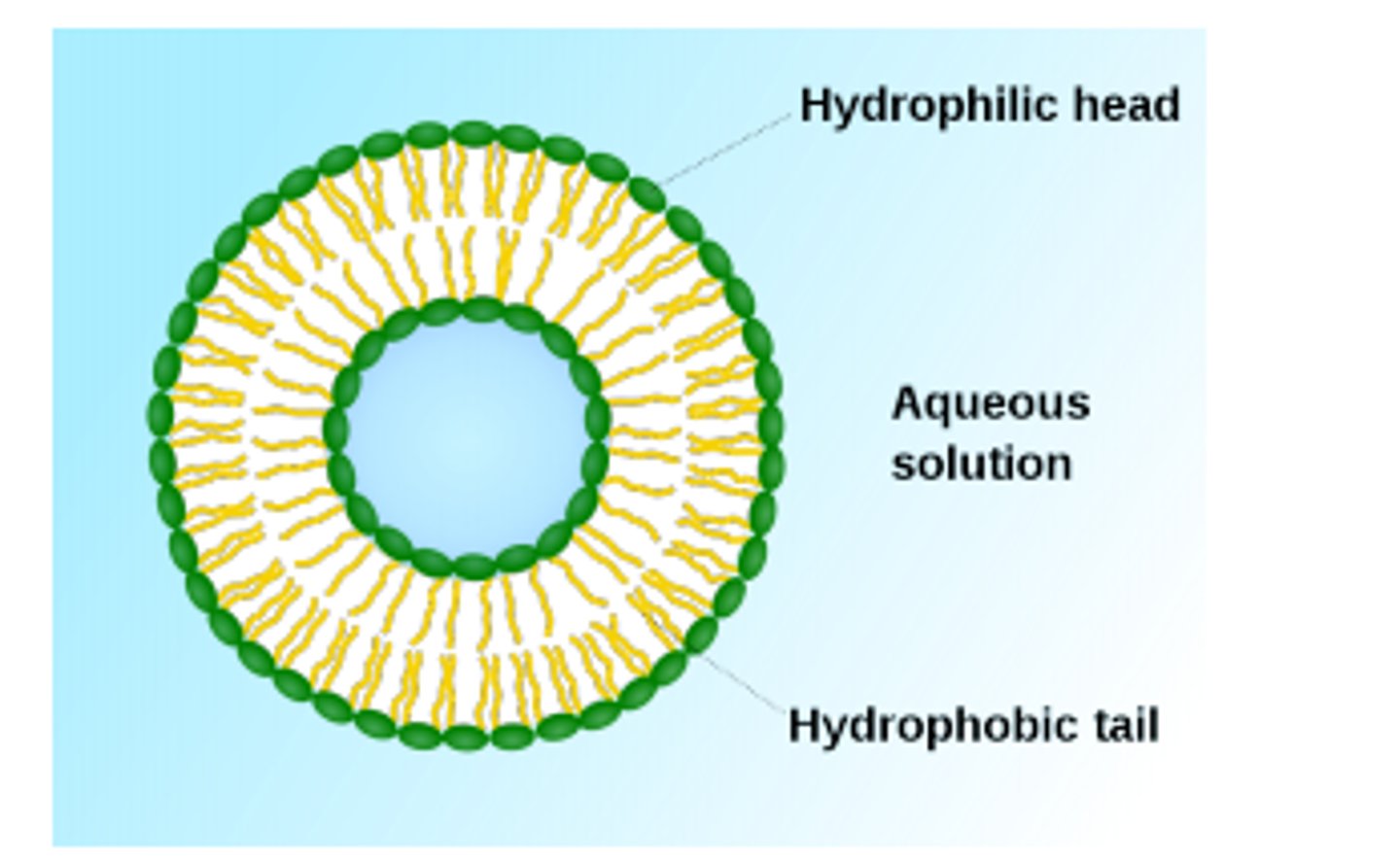
lipid rafts
lipids assembled in a defined patch in the cell membrane
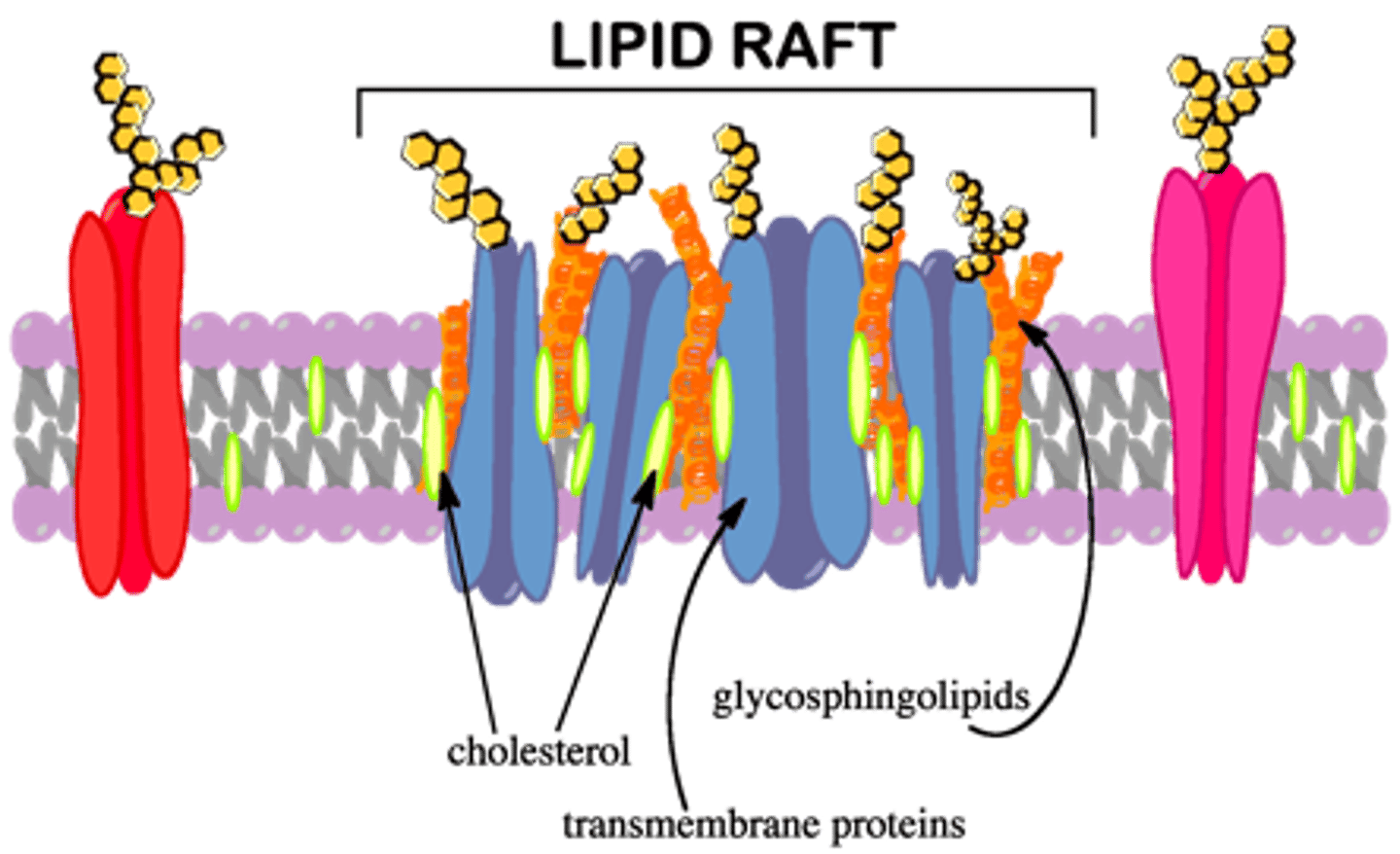
lipid flip-flop
spontaneous transfer of a lipid between layers (very rare)
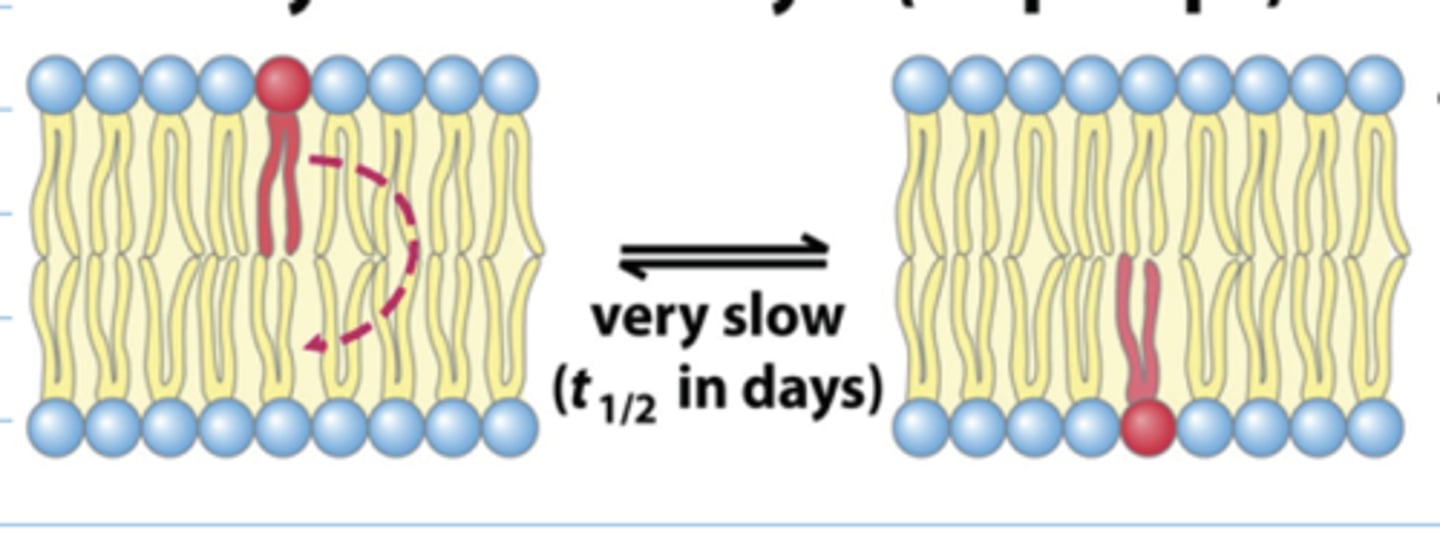
types of proteins in cell membrane
transport, receptor, anchor
transport proteins
helps move substances across a cell membrane
receptor proteins
senses surroundings and receives messages, transmits info
anchor proteins + two types?
maintains cell structure/shape by attaching to other proteins
(integral membrane & peripheral)
integral membrane proteins
permanent (can't be moved) usually transmembrane
peripheral membrane proteins
temporarily associated with weak noncovalent attractions
gylcolipid/glycoprotein
carb cov. attached to lipid/protein
mosaic model of cell membrane
lipid bilayer is fluid & made up of a variety of molecules
simple diffusion
diffuse directly into cell membrane w out assistance as a result of concentration differences
ONLY HIGH -> LOW
facilitated diffusion + types of transport proteins
diffusion across cell membrane through transport protein (transmembrane protein that spans entire membrane)
channel & carrier proteins
carrier protein
binds to and transports molecules
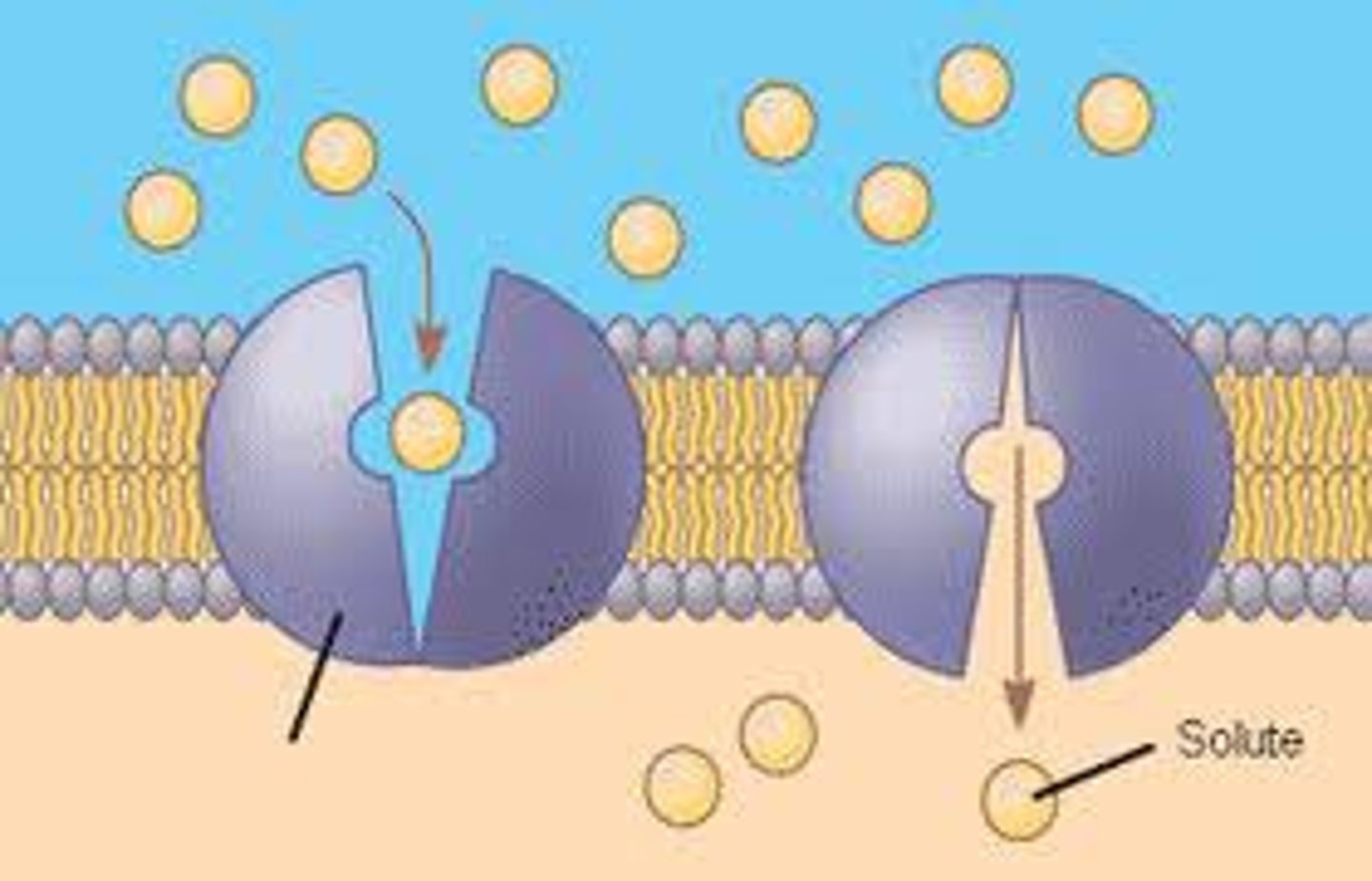
channel protein
provides opening where specific molecules can pass through (sometimes have "gates" that respond to a signal)
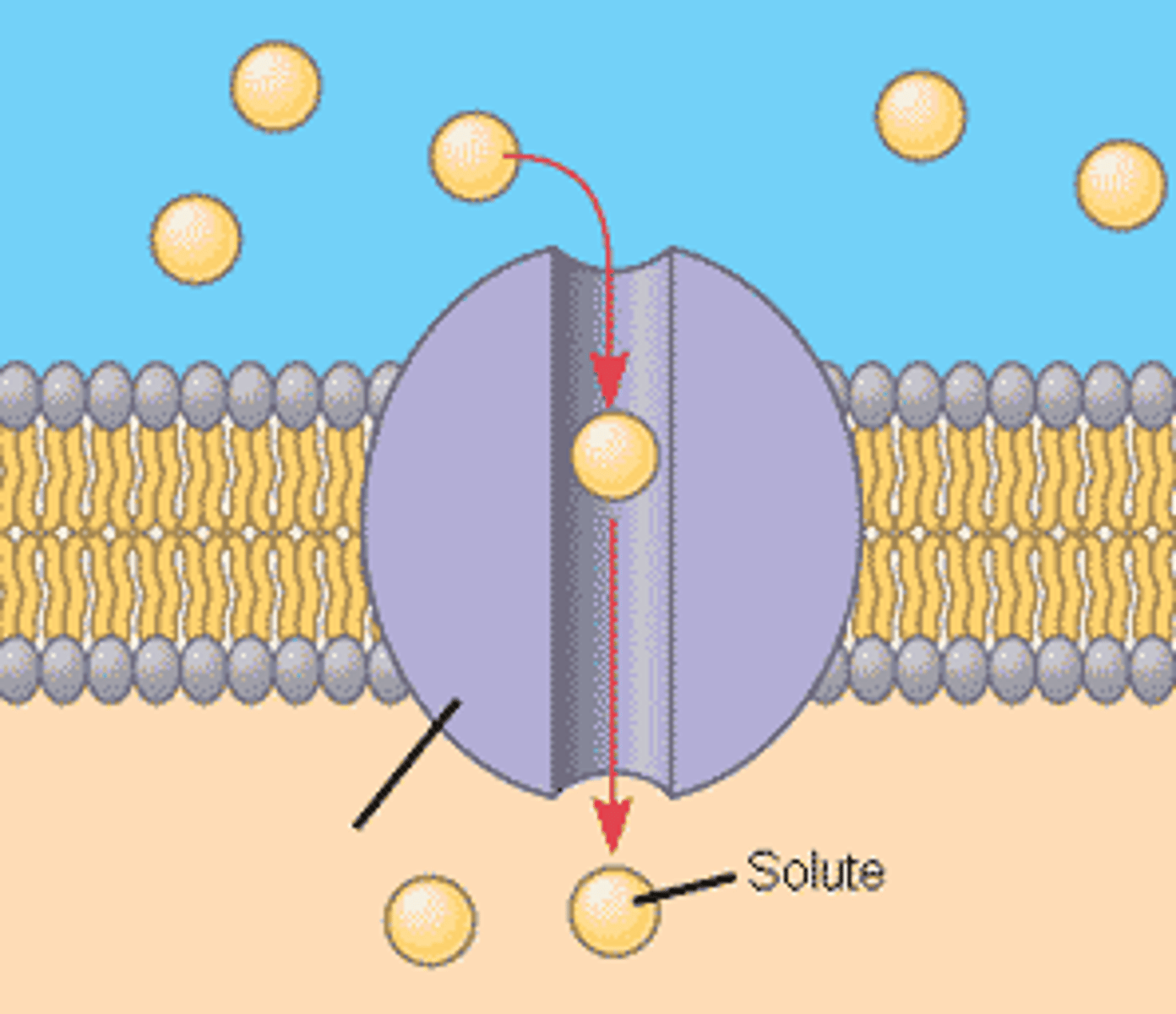
aquaporins
channel proteins that facilitate the passage of water
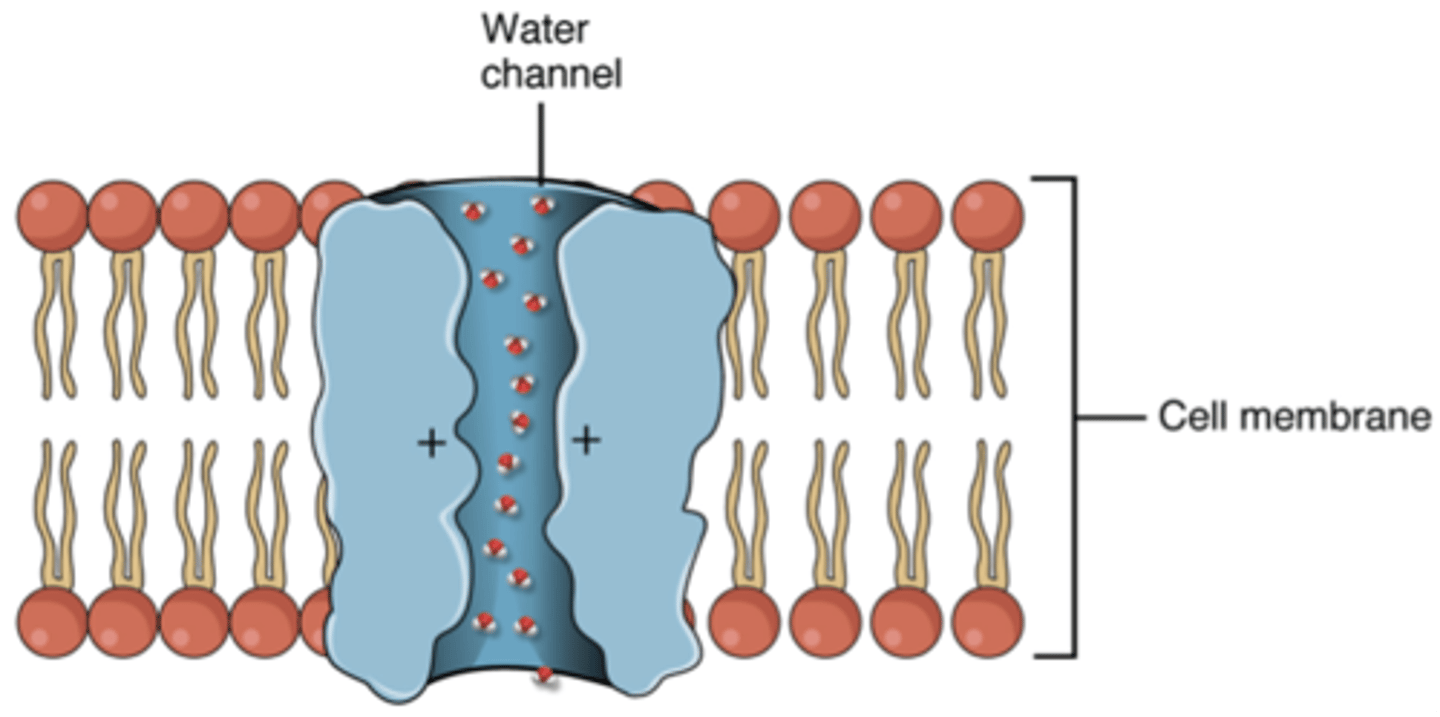
ways cells take in molecules
passive & active transport
passive transport
Requires NO energy
movement of molecules from high to low concentration
moves with the concentration gradient
active transport
REQUIRES energy
movement from low -> high
concentration moves against concentration gradient
primary active transport
uses energy from ATP directly (energy stored in bonds)
secondary active transport
uses PE from electrochemical gradient generated by primary active transport
antiporters
type of active transport that moves two molecules in opposite directions

symporters
carry two substances across the membrane in the same direction
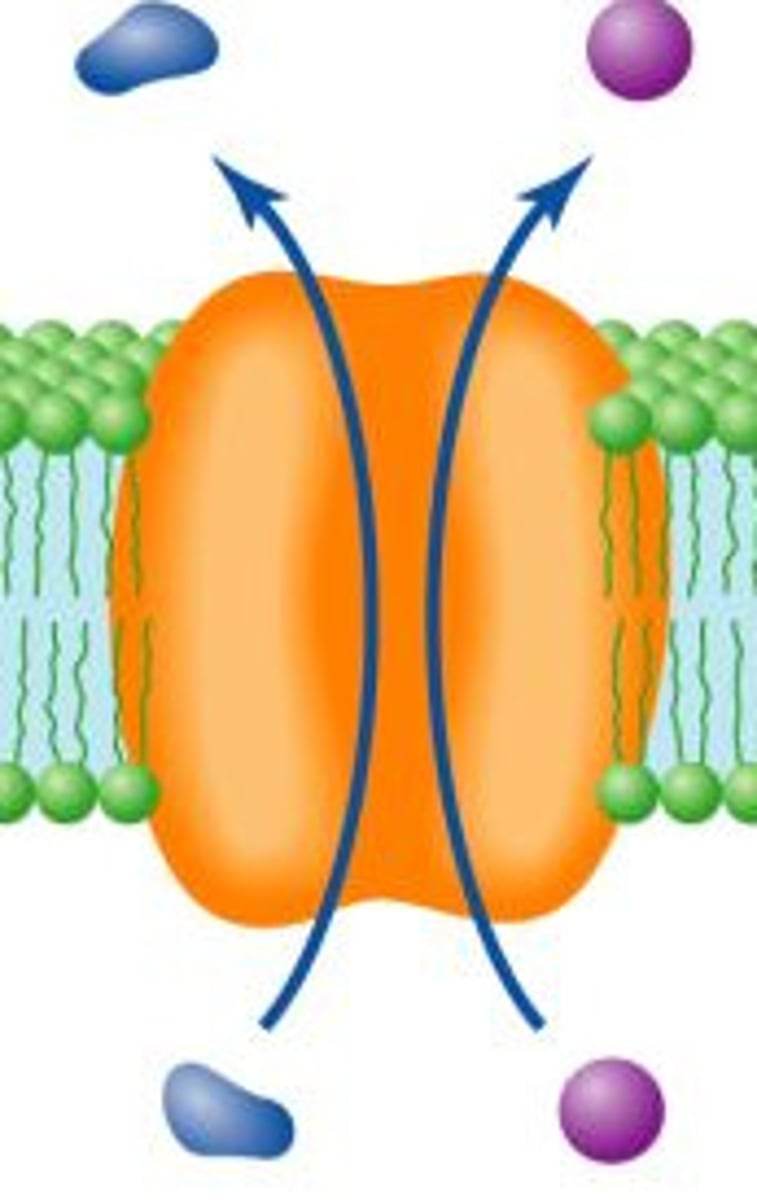
how r large molecules moved in/out of the cell?!
endocytosis & exocytosis (+ phagocytosis)
endocytosis
taking in molecules from extracellular space thru the formation of a vesicle
exocytosis
vesicle fuses with cell membrane, releasing its contents to the extracellular space
phagocytosis
form of endocytosis where microorganisms/dead cells/large particles are "absorbed" into the cell -> digested in lysosomes
ONLY EUKARYOTIC
osmosis
diffusion of water across a selectively permeable membrane (from low solute conc -> high solute conc)
osmosregulation aka whys osmosis important/necessary?!
osmoregulation is a form of homeostasis; chemical functions of cells/organisms depend on amt of water in a cell (eg. cell membranes which act as selectively permeable membranes)
osmotic pressure
the amount of force applied to a solution that prevents solvent from moving across a semipermeable membrane
hydrostatic pressure
pressure exerted by any fluid due to gravity
tonicity
osmotic pressure & direction of water movement (how strongly water is pulled from one sol to another)
hypotonic solution
cell gains water
solution solute concentration < cell solute concentration
hypertonic solution
cell loses water
cell solute concentration > solution solute concentration
isotonic solution
cell neither gains nor loses water; a solution whose solute concentration is equal to the solute concentration inside a cell
turgor, what's lack of turgor called?
when the cell walls push outward due to water pressure increases inside the cell
(caused by water/turgor pressure, lack of turgor = wilting)
water potential - what does low wp signify?
measure of how likely water is to move in and out of cells
(low wp = water has a low force driving it to move from one area to another & vice versa)
equation for water potential
water potential = solute potential + pressure potential
pressure potential
THE SOLUTION’s PRESSURE POTENTIAL IS USUALLY 0; physical pressure increases water potential
solute potential
ALWAYS NEGATIVE because the greater the concentration of a solute, the lower the water potential
(dissolution of solutes uses up available PE)
solute potential = iCRT -> ionization constant?
ionization constant depends on number of ions involves (eg. NaCl has i = 2)
when are the various potentials = 0?
PURE WATER: water, solute, pressure potential = 0 OPEN CONTAINER: solution’s pressure potential = 0
whats it mean when a cell keeps a constant volume
solute potential = pressure potential
osmoregulation - what's it do?
regulation of osmotic pressure inside cells & organisms
keeps internal fluids from becoming too concentrated
(form of homeostasis)
osmoconformers
organisms that match their internal osmotic pressure to that of their surrounding environment
DOESN'T spend too much energy
osmoregulators
actively regulates their internal osmotic pressure to maintain homeostasis (regardless of external conditions)
DOES expend significant energy pumping ions across cells to regulate enter/departure
what's it mean to say euks are in dynamic continuity
maintain stability & function thru various continuous exchanges despite constant internal/external changes
multicellularity
being composed of many cells
-> allows for many diff functions & possibilities
symbiosis & symbiont
close relationship & interaction btwn two organisms
symbiont: organism that lives in closely evolved associate w other species
the two eukaryotic cell origin theories
1. endosymbiosis
ONE SINGLE EVENT in which a prokaryotic cell engulfed smaller prok cells (eg. proteobacteria -> mitochondria)
2. symbiogenesis
GRADUALLY evolved through series of endosymbiotic events integrating different prokaryotic organisms
cytosol
liquid part of cytoplasm
enzyme
a protein that acts as a catalyst
cellular respiration
glucose + oxygen → CO2 + water + ENERGY
converts the energy stored in organic molecules to ATP
photosynthesis
CO2 + water + ENERGY → glucose + oxygen
uses sunlight energy to synthesize carbs
protist
euk that isnt plant animal or fungus
endosymbiosis
one organism lives within the other